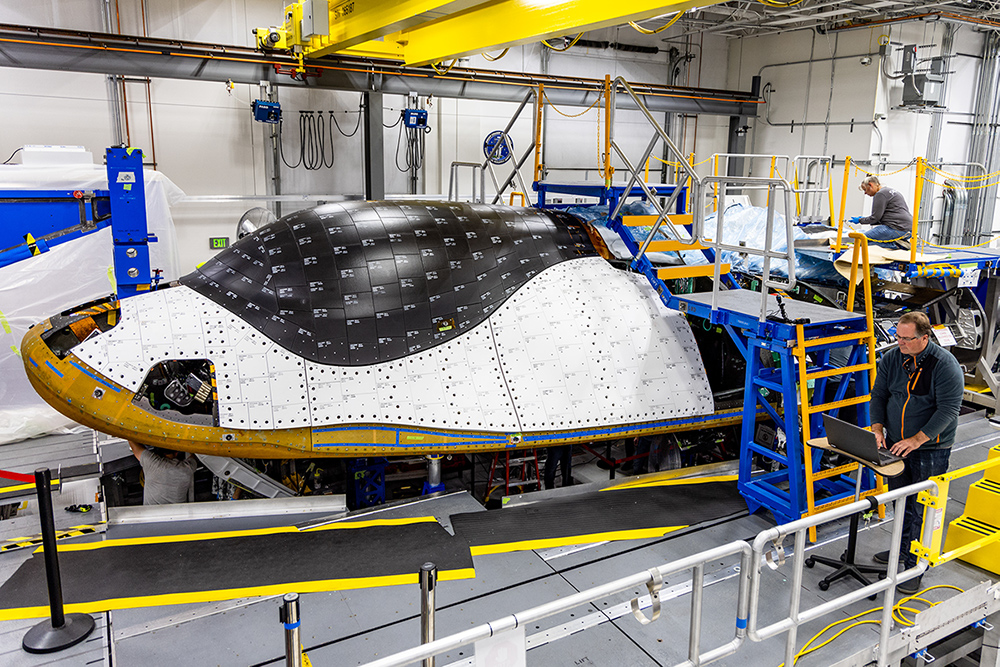The next and most profound industrial revolution in human history is taking place in low Earth orbit

Building on the shoulders of the Apollo generation, the Artemis missions will pave the way for humans to return to the Moon, begin the exploration of Mars, and someday humanity will reach the edges of our solar system and beyond.
While deep space exploration is critical to our understanding of so many unanswered questions about the universe and our place in it, it is equally important that the United States government and private industry work together to lead the commercialization of low low-Earth orbit (LEO), and capture the resulting massive new space economy.
As I wrote in The Washington Post Recently, the most important chapter in human history is the industrial revolution taking place in LEO, just 250 miles above our heads. We are at a turning point for our civilization, transitioning from 60 years of space exploration to a new era of unprecedented economic activity, production and growth in space. This emerging era is called the orbital era, and it will drive a new trillion-dollar industry.

We are on the cusp of the full commercialization of space, with orbital-era businesses and factories establishing a permanent human presence in LEO. Microgravity, higher radiation levels, and a near-vacuum state create an unusual environment that will allow for discoveries that could improve life on Earth. As explorers, we will always look to the stars and wonder about other worlds, but as stewards of this planet, we must look back at it from space and ask ourselves how we can help.
Biotech firms, pharmaceutical manufacturers, manufacturers of semiconductors and other advanced materials – companies from all industrial sectors – will invent and manufacture their next breakthrough products that will benefit life on Earth in microgravity space factories.
Sierra Space is building the infrastructure and end-to-end business and technology platform that accelerates the new space economy. Our company is committed to developing close, mutually beneficial relationships with existing businesses and partners, creating powerful ecosystems to enable companies from multiple sectors to innovate in the space. Being first in the orbital era, we know how important it is for businesses to make the leap to LEO.
Our business ecosystem architecture will usher in this new era. It all started with the use of our revolutionary technologies, such as the first commercial family of space planes and the first commercial family of ultra-large and ultra-powerful space vehicles that are expandable and customizable. These technologies have been in development for several years, and today are at an advanced stage of production and testing. Our Dream Chaser spacecraft will launch to the International Space Station in 2023, and our LIFE™ Expandable Space Module System will enter orbit four years later after the successful completion of two critical final blast tests.
Sierra Space is building an entire platform and ecosystem, bringing together next-generation space transportation, affordable space infrastructure systems and innovative partners to provide turnkey solutions for our commercial and government customers.
Our Human Space Flight Center and Astronaut Training Academy are dedicated to developing and training the workforce that will create a new economy. And our research office, led by our PhDs in biotechnology and advanced materials, works with our customers to develop new products, such as oncology drugs and advanced metal materials.
In the 1990s, aboard NASA’s Wake-Shield Facility, University of Houston materials scientist Alex Ignatiev produced a semiconductor in the vacuum of space that was 10,000 times better in quality than those made on Earth. In 2016, bioengineers used a 3D printer to create a two-chamber structure of an infant’s heart from stem cells during a parabolic flight that simulated weightlessness. Microgravity will simply revolutionize the way we create things and lead to advances that will benefit all of humanity.
Orbital manufacturing also unlocks billions of dollars for companies, especially drug makers. In accordance with a recent study McKinsey & Company, partnering with space companies, pharmaceutical companies can generate more than $4 billion in annual revenue. Consider that just one major breakthrough in oncology compounds has the dual benefit of transforming healthcare as we know it today.
The authors of Art Harvard Business Review article, “Your Company Needs a Space Strategy (Now)” seem to share our sense of urgency and offer some advice on finding the right team. “If you have an idea for a product or service that you could produce or provide in space, if a key partnership could be developed, then make that partnership happen.”

I recently signed an agreement on behalf of Sierra Space with the University of California, San Diego to expand the work of their researchers on the International Space Station to a new commercial location in orbit. The University of California, San Diego and its Sanford Stem Cell Institute will have dedicated research and biomanufacturing facilities on Orbital Reef, the world’s first commercial space station being built by Sierra Space and Blue Origin, by the end of the decade. They are already studying things that are impossible in normal gravity on the ISS. A breakthrough in the diagnosis and treatment of precancerous diseases on the Orbital Reef could lead to the production in orbit of drugs that eliminate the earliest forms of cancer.
Our company is committed to leading the commercialization of LEO and collaborating with other industry leaders so that we can find new solutions to problems here on Earth.
https://spacenews.com/the-next-and-most-profound-industrial-revolution-in-human-history-is-underway-in-low-earth-orbit/ The next and most profound industrial revolution in human history is taking place in low Earth orbit




